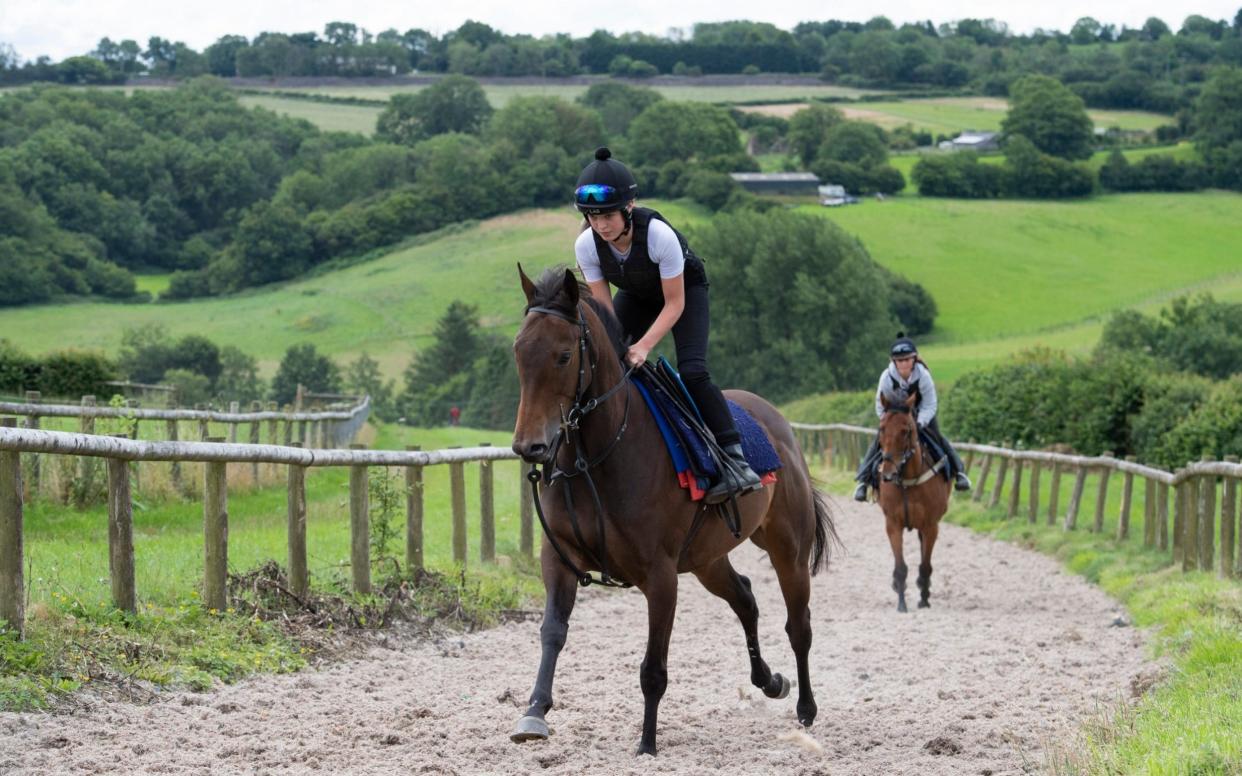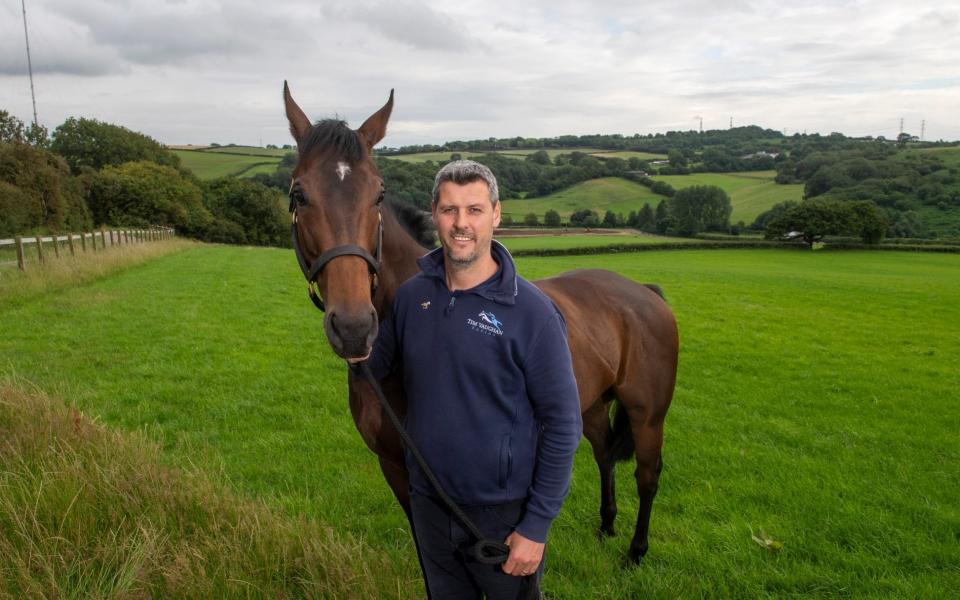Champion horse trainer moves stables to top of valley for its 'winning microclimate'

A top horse trainer has moved his stables to the top of a valley as he claims the new microclimate helps the horses win more races.
Tim Vaughan, a champion point-to-point jockey, spent four years researching the optimal air flow, wind speed and ventilation levels on his yard to achieve peak performance on the track.
The father-of-three, who has trained top tier racehorses in the UK and Ireland for more than a decade, concluded that moisture in the winter months was hampering the performance of his 85 equines, as it locks allergens into the air which are then breathed in, clogging up the lungs.
Mr Vaughan, 40, has now relocated the horses he is preparing for major tournaments 800 metres up a slope at his farm in Cowbridge, Wales, where there is plenty of air and sunshine to disperse spores and other pollutants, keeping their lungs clear.


"We were extremely successful and had lots of winners but when the damp, wet winter weather set in from October the horses just didn't perform as consistently and progressively as they did at other times of the year," he told The Telegraph.
"People thought I was mad because I spent four years analysing it. You need the horses inhaling as clean air as you can. When one horse breathes out you don't want it breathing in that air. You want lots of sunshine even in the winter.
"It's the moisture in the environment which holds the allergens and affects the horse's respiratory system. At the top of the hill there's far more breeze and air flow."
Mr Vaughan took advantage of the coronavirus lockdown to make the change of location at his stables, which lie 15 miles west of Cardiff.
Three seasons ago, he moved 50 horses up the hill on a trial basis to see if it affected their performance on the racetrack.
He is now convinced that consistency of wins is hugely influenced by microclimate.
"I can tell by the way they're running that they're in good form - more wins and more consistency in their running style," he said.
"I'm now far more confident we're getting maximum potential out of every horse. You want happy and successful horses running to form to keep owners happy and I've left no stone unturned in my quest to achieve that."
Mr Vaughan has converted his now vacant yard at the bottom of the valley into a rental space, with a new veterinary practice and saddlery shop among the businesses to have moved in.

Alan Creighton, head of environment and nutrition at the Irìsh Equine Centre, is one of the few people in the racing world versed in what kind of microclimate produces winning horses.
Mr Creighton, who helped Mr Vaughan with his relocation project, said: "Respiratory systems are one of the most important things for a racehorse.
"For the lungs to function they need a constant supply of clean air. At racing yards there's a lack of ventilation and as a consequence there's high humidity in stables which is the perfect breeding ground for mould and bacteria. Taking away the dampness and getting rid of spores is key."

 Yahoo News
Yahoo News 
